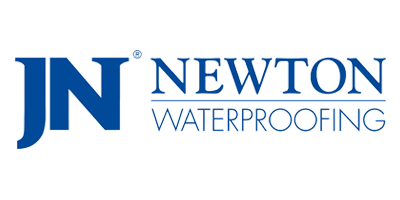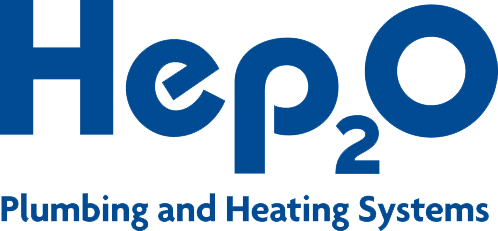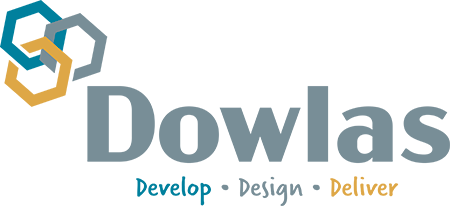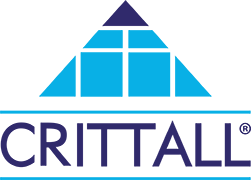Back
Website Jargon Explained: The A–Z Guide to Website Terms
Website Jargon Explained: Top Website Terms You Need to Understand
Website jargon explained: launching or updating a business website should be exciting, but it can quickly become confusing when designers and developers start using unfamiliar terms. Understanding these phrases will help you make informed decisions, communicate clearly with your web agency, and get the most from your investment. This guide breaks down the essential A–Z of website terminology so you can approach your project with confidence.
0–9
301 Redirect
A permanent redirect from one URL to another, used to preserve SEO value.
404 Page
An error page displayed when a requested URL cannot be found.
A
Above the Fold
Content visible before scrolling. Place key messages and actions here.
Alt Tags
Alt tags, also known as “alt attributes” or “alt descriptions,” are snippets of HTML code that provide a text alternative for images on a webpage.
API
Application Programming Interface – a set of rules for different software components to communicate.
Analytics (Google Analytics)
Tracking to measure traffic, behaviour, and performance.
B
Back-End Development
Server-side code powering features, data, and integrations.
Backlinks
A backlink is a hyperlink from one website to another, also known as an inbound link or incoming link.
Bandwidth
How much data your hosting can transfer; impacts speed under load.
Below the Fold
Content visible only after scrolling.
Bounce Rate
The percentage of visitors who leave after viewing a single page.
C
Call-to-action
A call to action (CTA) on a website is a prompt or instruction designed to encourage an immediate response or specific action from the user.
Canonical URL
A canonical URL is the single, “preferred” URL for a webpage that tells search engines which version of a page to display in search results when multiple URLs exist with the same or very similar content.
CDN (Content Delivery Network)
Copies assets to global servers to speed up delivery.
CMS (Content Management System)
Software to publish and edit content without coding.
Content
All information on your site: copy, images, video, downloads.
Cookies
Small files on devices to remember preferences and activity.
Core Web Vitals
Google’s UX metrics for loading, interactivity and visual stability.
Crawlable
Crawlability refers to how easy it is for search engine bots, such as Googlebot, to access and navigate the pages of your website.
CSS (Cascading Style Sheets)
Controls layout and visual styling of HTML elements.
Conversion Rate
Percentage of visitors who complete a goal (enquiry, purchase, sign-up).
D
DDoS Attack
Traffic flood that makes a site unavailable.
DNS (Domain Name System)
Translates a domain to the server’s IP address.
Domain Name
Your registered web address (e.g. example.com).
E
E-commerce
Online selling with product pages, basket, checkout and payments.
E-E-A-T
E-E-A-T is a Google framework that stands for Experience, Expertise, Authoritativeness, and Trustworthiness. It is used to evaluate the quality and credibility of online content.
Email Marketing
Email marketing is a digital marketing strategy that uses email to communicate with potential and existing customers to promote products or services, build brand loyalty, and drive sales.
Error 500
Generic server error indicating the request couldn’t be completed.
F
Favicon
Small icon shown in the browser tab and bookmarks.
Front-End Development
Code that controls how a site looks and behaves in the browser.
G
Google Analytics
Analytics platform for traffic and behaviour insights.
Googlebot
Googlebot is the web crawler used by Google to discover and index web pages for its search engine.
Google Search Console
Google’s tool for indexing status, search queries and site health.
H
H Tags (Headings)
H1–H6 structure content for users and search engines.
Head & Body
Head holds meta/scripts; body holds visible content.
Hosting
A service that stores your site and serves it to visitors.
HTTPS
HTTPS, which stands for Hypertext Transfer Protocol Secure, is a secure version of the standard HTTP protocol.
HTML
Markup used to structure web content.
Hyperlink
Clickable link to another page or resource.
I
Indexing
When search engines add your pages to their database.
Infographics
Visuals combining text and data for quick understanding.
Internal Link
Link to another page on the same site.
IP Address
Unique number that identifies a device or server online.
J
JavaScript
Language enabling interactivity and dynamic content.
K
Keywords
A word or phrase in the content of your web pages that matches the words and phrases users are entering into search engines as closely as possible.
Keyword Research
The process of identifying and analysing the terms and phrases people use when searching for information online, specifically within search engines like Google.
KPI (Key Performance Indicator)
A metric to measure success against objectives.
L
Largest Contentful Paint (LCP)
Largest Contentful Paint (LCP) is a user-centric web performance metric that measures the time it takes for the largest image or text block visible within the viewport to become fully rendered on the screen, from the moment the user requests the page.
Landing Page
Focused page designed to drive a single action.
Lazy Loading
Defers loading images/scripts until needed to speed up pages.
M
Malware
Malicious code intended to harm or exploit a site.
Marketing Agency
A marketing agency is a specialised B2B company like Purplex that partners with other organisations to plan, execute, and manage their marketing strategies and activities to attract customers and grow their business.
Metadata
Title, description and other data used in search/social previews.
Meta Description
A meta description is a short snippet of text that summarises a webpage’s content. It’s an HTML tag that search engines use to display a description of the page below its title in search results.
Mobile-First Indexing
Google primarily indexes and ranks the mobile version of pages.
N
Navigation
Menus and links that help users move through your site.
Noindex / Nofollow
Directives telling search engines not to index a page or follow a link.
O
Open Graph
Meta tags control how pages look when shared on social platforms.
Organic Search
Organic search refers to the unpaid listings of information that appear on a search engine results page (SERP) when a user enters a query, ranked by algorithms based on relevance, quality, and authority rather than paid advertising.
Organic Traffic
Visitors arriving via unpaid search results.
P
Page Speed
How quickly a page loads and becomes usable.
Pagination
Splitting long content across multiple pages.
Permalink
Permanent URL of a page or post.
PHP
Server-side language used by many CMS platforms.
Plugins
Add-ons that extend features (e.g. security, SEO, forms).
“PR” (Public Relations)
“PR” (Public Relations) is the strategic management of communication and reputation between an organisation and its publics, focusing on building goodwill, mutual understanding, and influencing opinion, rather than direct product sales like advertising or traditional marketing.
Q
Query String
Key–value pairs in a URL after “?” are used to pass parameters (e.g. tracking).
R
Redirects (301/302)
Send users and search engines from one URL to another.
Responsive Design
Layouts that adapt to different screens and devices.
robots.txt
A robots.txt file is a text file on a website’s server that contains rules and instructions for web crawlers (like search engine bots) to guide their behaviour, specifying which pages or directories they can and cannot access.
S
Schema Markup
Structured data that helps search engines understand content.
Scrolling
Moving down a page to see more content (infinite or paginated).
SEO (Search Engine Optimisation)
Improving visibility in search to grow organic traffic.
Server
Hardware/software that stores your site and serves it to users.
Service Pages
“Service pages” are dedicated web pages that provide detailed information about the products or services a business offers, explaining what they are, how they work, and the value they provide to customers.
Sitemap (HTML / XML)
HTML for users; XML for search engines to list pages.
Social Proof
Social proof is the use of external validation, like customer reviews, testimonials, and endorsements, to influence potential customers by showing that others have already purchased or approved of a product or service.
SSL / TLS
Encryption between browser and server; shown by HTTPS.
T
Tag Manager (GTM)
Deploy tracking tags without code releases.
Target Keywords
Target keywords are specific words or phrases that a website aims to rank for in search engine results pages (SERPs).
Template
Reusable page layout that keeps design consistent.
Title Tag
HTML title shown in tabs and search results.
U
UI (User Interface)
Visual elements people interact with (buttons, forms, menus).
URL
A URL (Uniform Resource Locator) is the unique web address that tells a browser where to find a specific resource on the internet, such as a webpage, file, or application.
UX (User Experience)
Overall ease and satisfaction when using a site.
V
Version Control (Git)
Tracks code changes and supports rollbacks and collaboration.
Viewport
Visible area of a page on a device; set with the meta viewport tag.
W
WAF (Web Application Firewall)
Filters and blocks malicious traffic before it reaches your site.
Web Accessibility (WCAG)
Practices that make sites usable for everyone.
Web Crawler
A web crawler is an automated software program, also known as a bot or spider, that systematically browses the Internet to discover, download, and index web pages and their content.
Web Server
Software (e.g. Nginx/Apache) delivering pages to browsers.
Webpage
A single page on a website.
Website
A collection of related webpages under one domain.
Wireframe
Simple layout mapping a page’s structure before design.
WordPress
A popular open-source content management system (CMS) used to build and manage websites. Known for its flexibility, large plugin ecosystem, and ease of use for creating blogs, business sites, and e-commerce platforms.
WYSIWYG
Short for “What You See Is What You Get.” Refers to an editor that shows you how the final webpage will look while you’re creating it, without needing to write code directly. Common in website builders and CMS editors.
X
XML Sitemap
An XML sitemap is a machine-readable text file, written in XML (Extensible Markup Language), that lists all the important URLs of a website to help search engines like Google efficiently discover, crawl, and index its content.
Y
YMYL (Your Money or Your Life)
Pages affecting health, finance or safety; held to higher standards.
Z
Zero-Click Results
Answers shown in results pages that may satisfy queries without a click.
ZIP Compression (Gzip/Brotli)
Compression that reduces file sizes to speed page delivery.
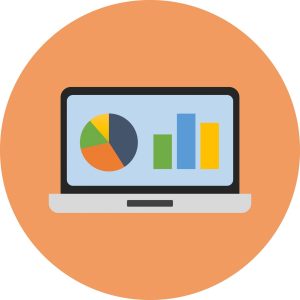
Hope This Helped
I hope this website jargon explained guide makes things clearer for you. The world of websites can feel overwhelming at first, but once you understand the terminology, it’s much easier to plan, discuss, and manage your online presence. Is your website scaring off potential customers? See how our world-class web team can help you. Whether you’re building your first site or improving an existing one, Purplex can help you with everything from design and development to SEO and digital marketing.
Get in Touch
If you’d like to talk about a new website project or improving your current one, our expert team is ready to help.
Call us: 01934 808132
Email us: grow@purplexmarketing.com
Contact page: Contact us here
We’ll explain every step, avoid unnecessary jargon, and create a website that works for your business.
You Might Also Like to Read
Here are some related articles you may find useful:
- Top 6 Web Design Myths – Common misconceptions about websites and the truth behind them.
- What is SEO and Why It Matters – A beginner-friendly breakdown of search engine optimisation.
- Why Your Website and Its Performance is Critical – How site performance affects business results.
- Responsive Web Design Somerset – Why responsive design is essential for modern websites.
This entry was posted in Purplex News




